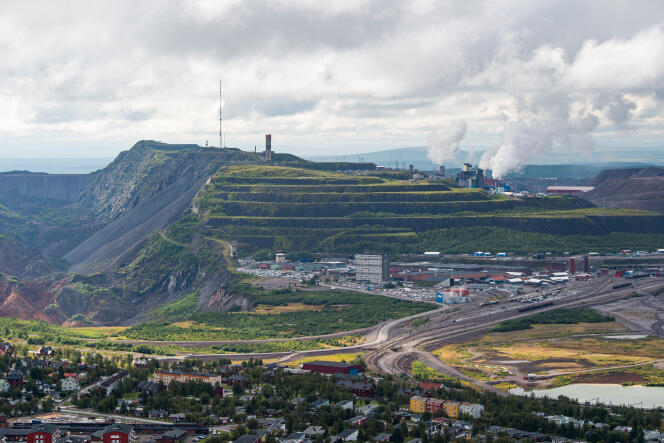
When geologists began to spot faults around Kiruna a city north of the Atlantic Circle, they were concerned the ground would collapse under the feet of its 18,000 inhabitants. A choice had to be made: close the world's largest underground iron ore mine or move the town. In 2004, the relocation option was chosen. It was a titanic project, requiring the relocation of one-third of Kiruna's population, and for which the state-owned Luossavaara-Kiirunavaara Aktiebolag (LKAB), which has operated the mine since 1898, has already spent 18.4 billion kroner (€1.6 billion) and set aside 10.5 billion kroner.
These figures give an idea of the scale of what the mine means to the Scandinavian country, especially since LKAB expects to produce iron ore until 2060. And that's not all: faced with the growing demand for certain strategic metals, essential to the environmental transition, LKAB has decided to reprocess its mining waste to extract phosphorus as well as rare earth elements (neodymium, praseodymium and dysprosium) from them, which could cover up to 30% of European needs, according to the company.
Sweden is around the same size as France and is one of the largest producers of metals in Europe. In 2020, 93% of iron ore produced in the European Union (EU) came from its mines, as well as 32.8% of lead, 34.4% of zinc, around 18% of gold and silver and 10.7% of copper. The Scandinavian kingdom is also "one of the world leaders in mining equipment with companies such as Sandvik or Epiroc," said Magnus Ericsson, professor at Lulea University of Technology (LTU).
'High potential'
Each of these factors should give it a head start, like its Finnish neighbor, in the race for crucial raw materials. In 2020, the Geological Survey of Sweden (SGU) published a report, together with its Nordic counterparts, taking stock of the reserves identified in the region. The conclusion: "We have substrate rock with high potential for mines such as the existing ones, but also for the extraction of strategic materials," said Erika Ingvald, director of information on minerals and the mining industry at SGU.
There are currently 12 mines in operation in Sweden – compared to about 100 in the 1950s. While none of them currently produce rare earth elements or strategic materials such as lithium, cobalt or graphite, prospecting is increasing after a hiatus in the last ten years, mainly due to falling metal prices. By 2021, 585 exploration permits had been issued by the mining inspectorate.
According to SGU, Sweden's subsoil contains at least 19,000 tons of cobalt and 3 million tons of graphite. They are also rich in lithium and vanadium. According to Mr. Ericsson, "about $120 million [€113 million] was spent in Sweden on exploration in 2021, as much as during the boom a decade ago, which suggests that there will be more mines in the future." It remains to be seen whether the projects will materialize.
You have 46.56% of this article left to read. The rest is for subscribers only.